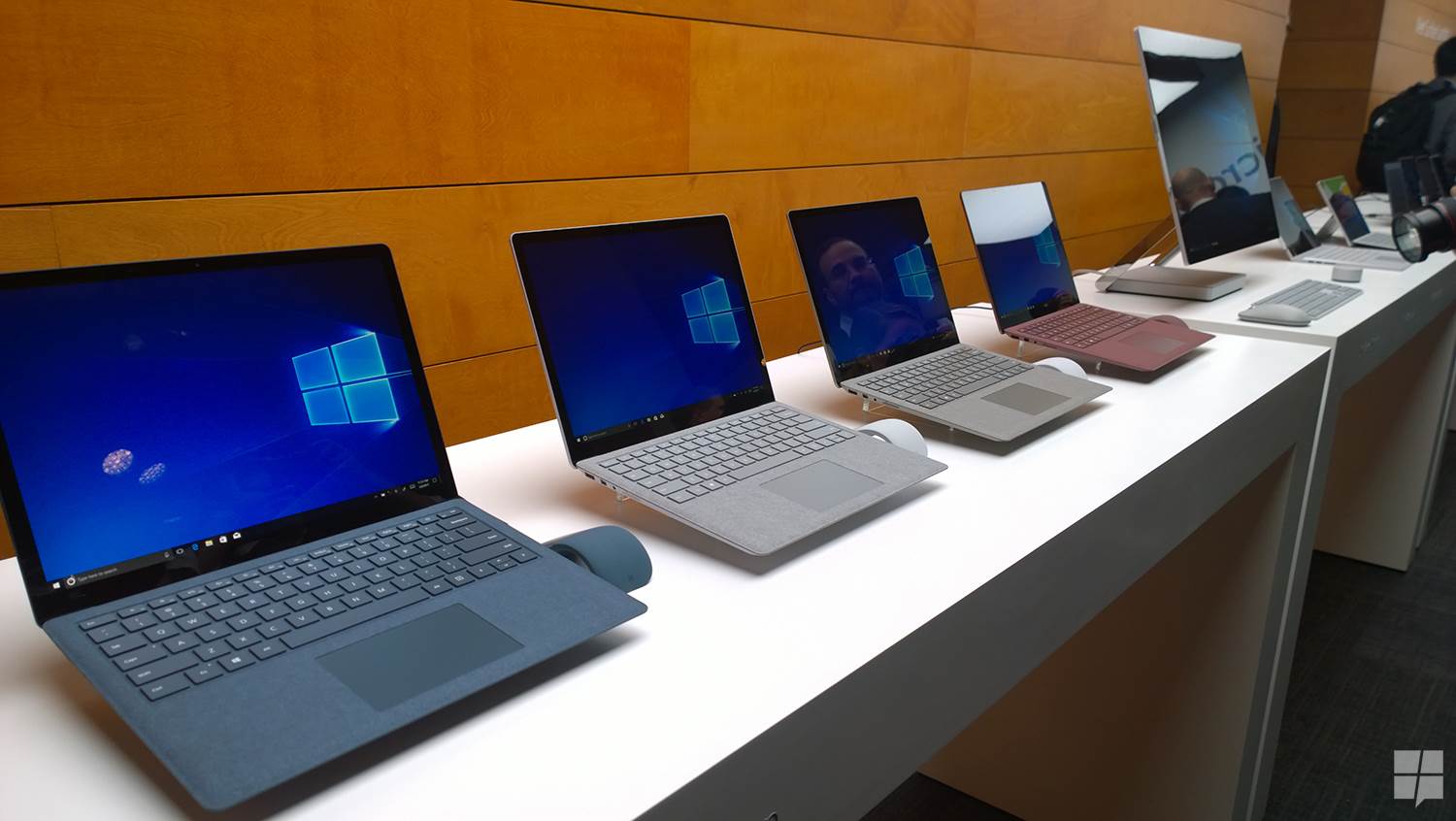[embedded content]
Microsoft is taking on Google’s Chrome OS with a new version of Windows: Windows 10 S. The new version of Windows 10 S is going to be targetted towards schools, and it’s effectively a lightweight version of Windows 10. Windows 10 S is going to power cheap new Windows 10 devices, where the main target customers are schools and students.
So what is Windows 10 S? And how is it different from Windows 10 Pro? You’ve questions, we’ve got answers:
It’s the Windows you know

Windows 10 S isn’t very different from the regular Windows 10. Fundamentally, Windows 10 S is the same as the regular versions of Windows 10 such as Pro or Home. Everything from the Start Menu, to the Task Manager, works and looks the same on Windows 10 S as they do on regular Windows 10. Unlike Windows RT, there isn’t any huge difference between Windows 10 S and regular Windows 10 in terms of functionalities or looks. It’s the Windows 10 you know, with some minor catches.
It can only download apps from the Windows Store

Windows 10 S only lets users download and install apps from the Windows Store, which means you basically won’t have to worry about malware on your PC. Windows 10 S blocks installation of any apps downloaded from outside of the Windows Store, including the classic Win32 apps and even UWP apps.
That doesn’t necessarily mean you won’t be able to use the classic desktops apps. Microsoft has a new Desktop App Bridge for Windows app developers that allow Win32 app developers to bring their apps to the Windows Store. Apps like Evernote, Slack, Kodi and others have already brought their powerful desktop apps to the Windows Store — and all of these apps will be downloadable in the Windows Store, along with the thousands of other UWP apps. What’s more, Spotify is also bringing its desktop app to the Windows Store and other major companies will likely follow suit.
It lets you upgrade to a more powerful version of Windows 10

But what if you want to use a classic desktop app (aka Win32) that’s not available on the Windows Store? Just like most other SKUs of Windows 10, Windows 10 S is upgradeable, which means you will be able to upgrade it to Windows 10 Pro. This will give you access to some of the more powerful features and of course: the ability to install Win32 apps from anywhere.
So how much does the upgrade cost? According to Microsoft, the upgrade from Windows 10 S to Windows 10 Pro costs $49 “or less.”
And that is what makes Windows 10 S so different from Windows RT. Microsoft’s Windows RT locked users down to one single OS, and there wasn’t any way of upgrading to a more powerful version of the OS at all but thankfully that’s not the case for Windows 10 S.
It has most of the features from Windows 10 Pro

Even though Windows 10 S is meant to be a simpler version of Windows 10, the operating system includes most of the features as Windows 10 Pro — including things like BitLocker, Azure AD domain join, and more. Here’s a table comparing the key features of Windows 10 S with Windows 10 Pro and Windows 10 Home:

You can’t change the default browser or search engine on it

An interesting limitation of Windows 10 S is the fact that it doesn’t let users change the default web browser. As a result, Microsoft Edge will be the default browser on the OS forever. Even if you install third-party browsers from the Windows Store, you won’t be able to set those as the default browser. You will still be able to use those browsers to browse the web, but whenever you click on a link in an app, it will open up Microsoft Edge instead of a browser you might prefer. Similarly, the default search engine on Microsoft Edge is Bing — and you can’t change that to Google, DuckDuckGo, or any other search engines.
It stacks up really well against the competition

The major benefit of Windows 10 S is the fact that it can run rich apps from the Windows Store, including some classic Win32 apps. Chrome OS, on the other hand, can also run Android apps. But most of these apps aren’t optimized for laptops which have a major effect on the user-experience. Most of the Android apps also include a user interface that works best with touch input, but the majority of Chromebooks do not have a touch screen. Windows 10 S, on the other hand, will also power some devices with touch screens — thanks to the Universal Windows Platform, however, most of the apps on the Windows Store are optimized to be used in a laptop.
More importantly, Windows 10 S comes with inking built-in and that is going to be crucial for Microsoft. After all, Windows 10 S is meant for students, and being able to take notes with a stylus such as a Surface Pen will be a very nice feature, but Chromebooks or Chrome OS don’t come with inking built-in, which is a major disadvantage — especially for students who will use these type of devices to take notes and sketch diagrams in their classes.
And lastly, Windows 10 S will let users upgrade to the slightly more powerful version of Windows 10 whenever they want. That’s not the case for Chrome OS, which is a bit similar to Windows RT where you’re only “locked” to using Chrome OS on a Chromebook.
Windows 10 S devices will start shipping next month, prices start at $189. Microsoft is launching its own Surface Laptop with Windows 10 S, but its OEM partners such as Acer, HP, Dell, Lenovo, and Asus are working on their own Windows 10 S laptops as well.







